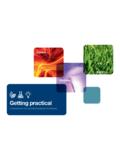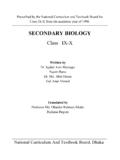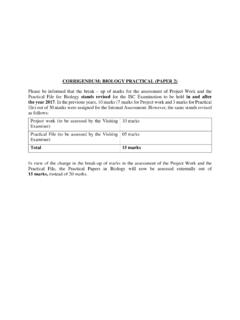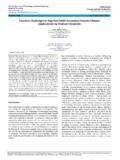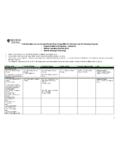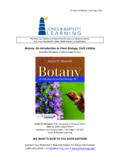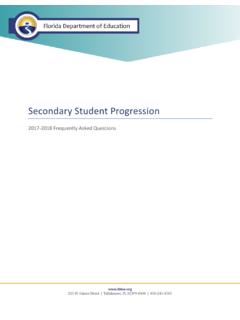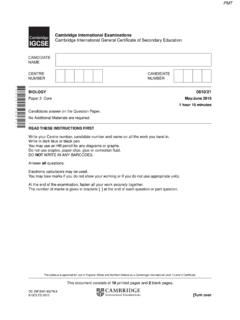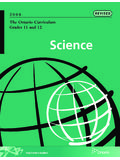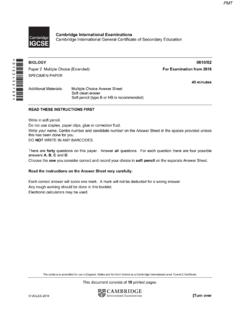Transcription of RESOURCING PRACTICAL SCIENCE - score …
1 REPORTRESOURCING PRACTICAL SCIENCE AT secondary LEVELR esourcing PRACTICAL SCIENCE at secondary level2 CONTENTS Background 3 What is PRACTICAL work? 3 Methodology 3 RESOURCING at secondary level main findings 3 Drivers influencing RESOURCING of PRACTICAL SCIENCE 10 Recommendations 11 RESOURCING PRACTICAL SCIENCE at secondary level3 BACKGROUND Taking part in PRACTICAL work is an integral and essential part of learning in the sciences . It provides experiences through which students can develop their understanding, enabling them to make the link between subject content and the physical and living worlds by experiencing and observing phenomena; PRACTICAL work teaches techniques and skills for handling equipment and materials safely; as well as promoting the development of scientific reasoning, so that students can understand, through direct experience, the importance of evidence in supporting scientific explanations and theories.
2 Therefore it is essential that PRACTICAL work is properly resourced and that all students have access to the equipment, facilities and opportunities necessary for a complete and authentic education in the 2008, score published the first of its reports on PRACTICAL work1: The associated research revealed concerns about the provision of resources for activities in schools. With this in mind, score commissioned Pye Tait Consulting to investigate the levels of RESOURCING in schools and sixth form colleges. This report is a response to their IS PRACTICAL WORK? score defines PRACTICAL work in SCIENCE education as learning activities in which students observe, investigate and develop an understanding of the world around them, through direct, often hands-on, experience of phenomena or manipulating real objects and materials. In order for enough of these sorts of activities to take place, schools need resources. To assess how many schools and sixth form colleges in England have sufficient resources, score created benchmarks3 in four areas: equipment and consumables, including an estimation of the quantity required; laboratory facilities; access to outside space; and technician support.
3 These benchmarks were designed to represent an acceptable level of RESOURCING , between a bare minimum and an aspirational gold standard . From the equipment and consumables benchmarks, a sample of indicative items was identified. These represent the minimum requirement for carrying out PRACTICAL work in the laboratory. METHODOLOGYSCORE commissioned Pye Tait Consulting to carry out a survey of schools and sixth form colleges in England, to gather evidence on the extent of the RESOURCING of PRACTICAL SCIENCE . The research used a mixed methods approach, combining quantitative and qualitative research instruments. It comprised online surveys for primary schools, secondary schools and sixth form colleges, with follow-up telephone interviews and onsite visits to a sample of establishments to explore some issues in greater depth. The surveys garnered a total of 552 responses from 448 secondary schools and sixth form score s research on PRACTICAL work can be found at 2 The full reports from Pye Tait, Under the Microscope, can be found on the score website at 3 The benchmarks are available on the score website to assist schools with their RESOURCING .
4 They can be found at RESOURCING AT secondary LEVEL MAIN FINDINGS Many state-funded secondary schools and sixth form colleges lack sufficient equipment for basic PRACTICAL work: Basic equipment for PRACTICAL work is missing or not working State-funded schools and sixth form colleges do not have enough funding to buy equipment The amount spent on SCIENCE varies greatly between different institutions Nearly half of secondary school teachers feel they do not have enough funding for PRACTICAL facilities are limiting the PRACTICAL work that can take place in schools and sixth form colleges: Schools and sixth form colleges do not have access to appropriate facilities for PRACTICAL work Over a quarter of respondents across all schools and sixth form colleges are dissatisfied with their laboratory facilitiesInadequate technician support is limiting PRACTICAL work: Just over a quarter of respondents within state-funded schools report that they need at least one additional technician.
5 Good technician support is being lost because of poor working PRACTICAL SCIENCE at secondary level4 MAIN FINDINGS1. Many secondary schools and sixth form colleges lack sufficient equipment for basic PRACTICAL Basic equipment for PRACTICAL work is missing or not working On average, state-funded secondary schools have just 70% of the equipment and consumables they need to teach SCIENCE subjects, with four in ten state-funded schools having less than 70% of the equipment and consumables they require. A wide range of equipment is necessary for the effective delivery of PRACTICAL SCIENCE at secondary level. Schools and sixth form colleges were asked to indicate whether they had enough sets of some commonly used and important pieces of equipment such as microscopes, eye protection and connecting leads for circuits. Although some equipment is accessible in almost all schools, there are inconsistencies in terms of the availability of other specialist items and this is a cause for concern.
6 The following sections provide more detail on equipment specifically required for PRACTICAL work in biology, chemistry and physics. However, it is worth noting that: more than 35% of secondary schools and sixth form colleges do not have enough data loggers with a range of sensors for small group work; 10% do not have eye protection for every pupil; More than 30% do not have enough bathroom scales (in Newtons) for students to work in small groups to measure their weight; and 50% do not have enough balances for students to measure mass to an appropriate accuracy at post-16. Biology Levels of RESOURCING across the sciences were poorest for biology. At pre-16, 37% of schools do not have access to sufficient quantities, in full working order, of the indicative items needed to carry out effective PRACTICAL work in biology. At post-16, fewer than 44% have sufficient quantities of these items in full working order. Specifically: Over 60% of schools and sixth form colleges cannot provide reasonable access to equipment to measure changes in the body for pair work.
7 Almost 50% of schools and sixth form colleges lack sufficient ecological sampling equipment for pair work. 45% of schools and sixth form colleges do not have access to water baths for small groups to carry out controlled temperature experiments. Nearly 40% of schools and sixth form colleges are not enabling their post-16 students to carry out basic genetic experiments (due to the lack of gel electrophoresis equipment). 30% of schools and sixth form colleges do not have enough example slides for pair work. Chemistry 29% of schools and sixth form colleges do not have the indicative items in sufficient quantities. In chemistry PRACTICAL work, students need to make accurate measurements, whether that be the volume of liquids used in an acid-base titration, ensuring they have the correct mass of reactants required for a chemical synthesis, or determining the pH of a solution. However: 35% of schools and sixth form colleges are unable to provide sufficient balances for small group work at pre-16 for those doing core and additional SCIENCE ; the figure rises to over 45% for the balances required for triple SCIENCE chemistry.
8 Nearly 60% of schools and sixth form colleges lack sufficient pH meters, preventing accurate pH measurements for the study of acids and bases. 40% of schools and sixth form colleges lack enough colorimeters for students to work in small groups to carry out measurements of concentration. In over 40% of schools and sixth form colleges, molecular modelling kits, which help to illustrate complex molecular concepts, were not present in sufficient quantities at for pre-16 students. At post 16, about 30% of schools and sixth form colleges lack sufficient thin layer chromatography plates for students to analyse samples individually, and about 40% lack enough heating mantles for pair PRACTICAL SCIENCE at secondary level5 Physics Some of the mainstays of pre-16 physics PRACTICAL work are activities measuring forces, speeds and acceleration, building circuits and investigating light. For each type of activity, at least a fifth of schools are unable to run the activity with pairs of students.
9 Specifically: 20% of schools and sixth form colleges do not have the equipment to do simple experiments measuring forces. 25% of schools and sixth form colleges do not have enough equipment for their students to work in pairs to build circuits. 40% of schools and sixth form colleges do not have a variety of magnets for pair work. Around 20% of schools and sixth form colleges do not have LV power supplies in sufficient quantities for pair State-funded schools do not have enough funding to buy equipment With limited RESOURCING and many demands on the money that is available, PRACTICAL SCIENCE must prove its worth. It is therefore concerning that over 80% of state-funded schools do not formally allocate part of the SCIENCE budget specifically for PRACTICAL work. Equipment and consumables account for 39% of the SCIENCE budget in state-funded schools. Given the average funding per student, this amounts to approximately 4 per head to spend on consumables and equipment.
10 These limited funds are needed to: buy consumables (chemicals, plant specimens, batteries, etc.); purchase new items or types of equipment (for example, an air track costing around 215); replenish or restock equipment supplies (for example, a pair of safety spectacles for approximately 10, meaning 300 for a class set; a microscope for 300 or more; a digital meter for approximately 35, meaning 700 to provide enough for a class to measure resistances using two meters per group). provide apparatus for controlled assessment. It is interesting to note that independent schools spend more than 10 per student. However, there is no reason to assume that these schools are being overly generous with their funding. Instead, taking into account responses on staff satisfaction with spending, it is reasonable to assume that the extra spending is something that staff consider necessary to provide the PRACTICAL opportunities that contribute to students education in the sciences .
